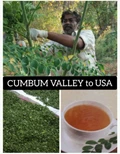
Moringa oleifera, also known as drumstick tree, ben oil tree, horseradish tree, and the miracle tree, is a plant native to India that also grows in Asia, South America, and Africa. For centuries, moringa is used in cooking and as a topical because of its many health and medicinal benefits. It is rich in calcium, potassium, iron, magnesium, zinc, and phosphorous, and in vitamins A, B1, B2, B3, B6, and C.
Now, let’s take a look at the different pests and diseases that the moringa plant has to deal with, along with ways to control and prevent them.
Pests and Diseases Of Moringa
1. Moringa Hairy Caterpillar
The female moth lays effs in clusters on the lower surface of the leaves. Once the larvae have hatched, they begin their feeding period which lasts about 13 to 29 days until they form a cocoon. The caterpillar feeds on the bark and foliage.
A severe infestation of a large cluster of caterpillars feeding on the plant leads to the defoliation of the tree. The organic way to control this infestation is by spraying a mixture of neem and datura extract with water. The infestation is also controlled by collecting egg masses and caterpillars and destroying them.
2. Damping off
Damping off is a disease common amongst young seedlings. This disease reduces the rate of seed germination. You can tell that your moringa plant is infected by damping off disease when water-soaked legions form at the collar region and the infected areas turn brown and rot. This disease spreads through irrigation water.
Favorable conditions for damping off disease include excessive and frequent irrigation, poorly drained soil, heavy rain, and high soil moisture with temperatures around 25 to 35°C. While there is no cure for plants that suffer from damping off disease, however, you can prevent the disease by providing good air circulation and by sterilizing your potting soil in an oven.
3. Moringa Bud Worm
Moringa bud worms lay oval creamy white eggs in clusters on the flower beds of the moringa plant. The larvae bore into the flower beds and lead to 75% of the shedding of buds. Damaged buds seldom blossom and fall prematurely. Moringa budworm infestations are common during the summer in South India.
To control moringa budworm infestation, you can attract its natural predators such as wasps, tigers, minute pirate bugs, big-eyed bugs, and damsel bugs. You can also use parasitoids such as Trichogramma pretiosum and cardiochiles nigriceps as biological control methods. Other management methods include plowing the ground around the tree to expose pupae and kill them or spraying carbaryl 50 WP 1.0 kg in 200 to 300 liters of water per acre.
4. Twig Canker
Twin canker is a disease common amongst moringa plants. The first sign of this disease in your plants is chlorosis of the leaves and the clearing of the veinlets. The leaves will start to wilt and die off completely in a matter of days. If left untreated, the symptoms will persist in the new leaves, and eventually, the plant will become stunted and die.
The disease spreads through the soil and develops when the soil has relatively high moisture levels and when the soil has a high temperature. When you start noticing the symptoms of twig canker disease in your plant, then start your treatment by pruning the flowering plant and removing all dead and wilted leaves, flowers, and stems. Treat the pruned parts of the tree with copper fungicides if the symptoms persist.
5. Pod Fly
Pod fly is an insect that infests the moringa plant during the summers. The adult pod fly is a small yellowing fly with red eyes. It tends to lay its legs in clusters on the grooves of tender fruit pods. Once the larvae emerge from the egg, it travels inside the tender fruits by boring small holes into them.
This causes the pods to shrink, rot, dry, and split before maturity. To control this pest infestation, you must collect and destroy all of the damaged and fallen fruits. You can spray a diluted solution of either citronella oil, vinegar, or eucalyptus oil with water to repel the flies. You can also spray organic insecticides to repel the flies.
You can prevent the infestation of pests by weekly monitoring your plant for weird spots and discoloration. Then remove and destroy all bug-infested leaves, twigs, and fruits, and flood the soil during autumn, when the adult insects have laid their insects.












